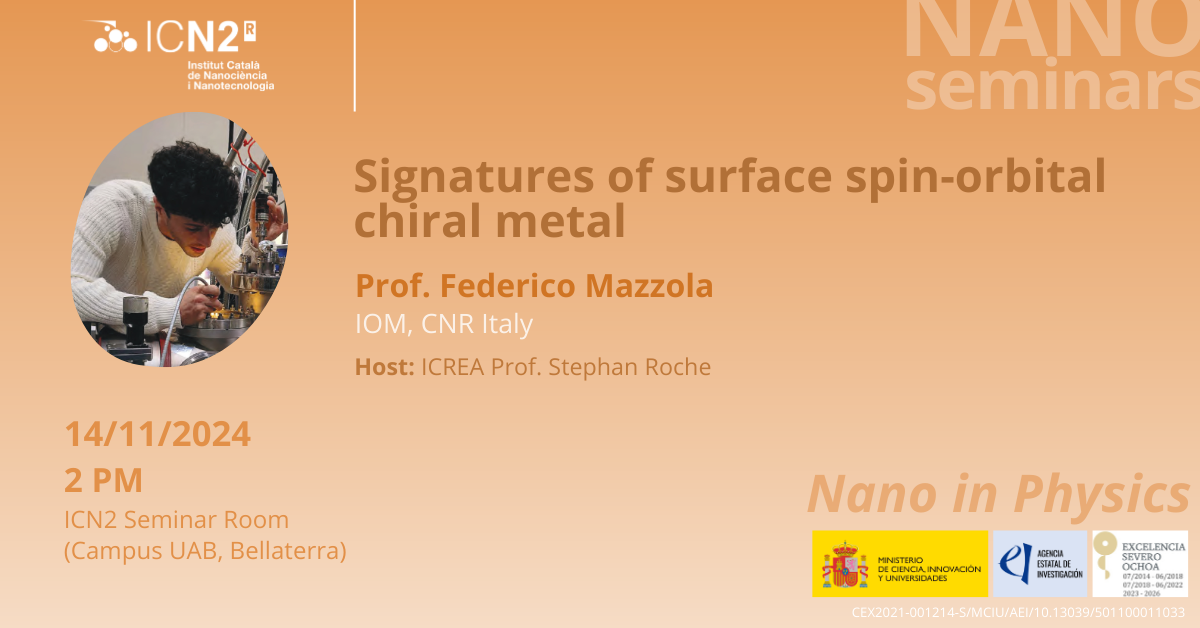Signatures of surface spin-orbital chiral metal
Thursday 14 November 2024, 02:00pm
ICN2 Seminar Room, Campus UAB
Nanoseminar in Physics
IN-PERSON EVENT, REGISTER HERE to attend
Speaker: Prof. Federico Mazzola, IOM, CNR Italy
Abstract: Surface experimental probes, such as angle-resolved photoelectron spectroscopy provide researchers access to the electronic structure of solids. Despite the advances in the field, recently, new forms of surface local magnetism completely different from standard descriptions have appeared. One example of such forms of magnetism are the one generated by the so-called loop currents, generated by the collective motion of electrons in solids.
Such currents are of paramount importance and their manifestation is tightly connected to the symmetries of a material. For example, if they involve the orbital and angular momentum, then there will be asymmetries upon mirror operator which will affect the orbital-and-angular momentum conservation. While this phenomenology can be often elucidated by muon spectroscopy in bulk systems, surface and interface effects remain elusive.
Here, I aim to give an overview of a new powerful methodology, based on the combination of circular dichroism and spin-resolved photoelectron spectroscopy, to uncover such elusive phases. I will do this starting from simple concepts and showing, at the end, my current research. In particular, I will show a new methodology able to access what is known as loop current, even if the latter manifest at the surface of a certain material. I will use as a prototype material Sr2RuO4, and find out that the signal collected is compatible with that of a surface spin-spin orbital chiral metal. In doing this, I will extend this concept to show how to measure topological quantities such as spin-Berry curvature and the geometric quantum tensor in solids.
Hosted by ICREA Prof. Stephan Roche, Theoretical and Computational Nanoscience Group Leader at ICN2
Introductory Talk: Luis Manuel Canonico Armas, Postdoctoral Researcher at Theoretical and Computational Nanoscience: Real-Space Calculation of Current --induced Orbital Moment in low-symmetry Van der Waals Heterostructures


